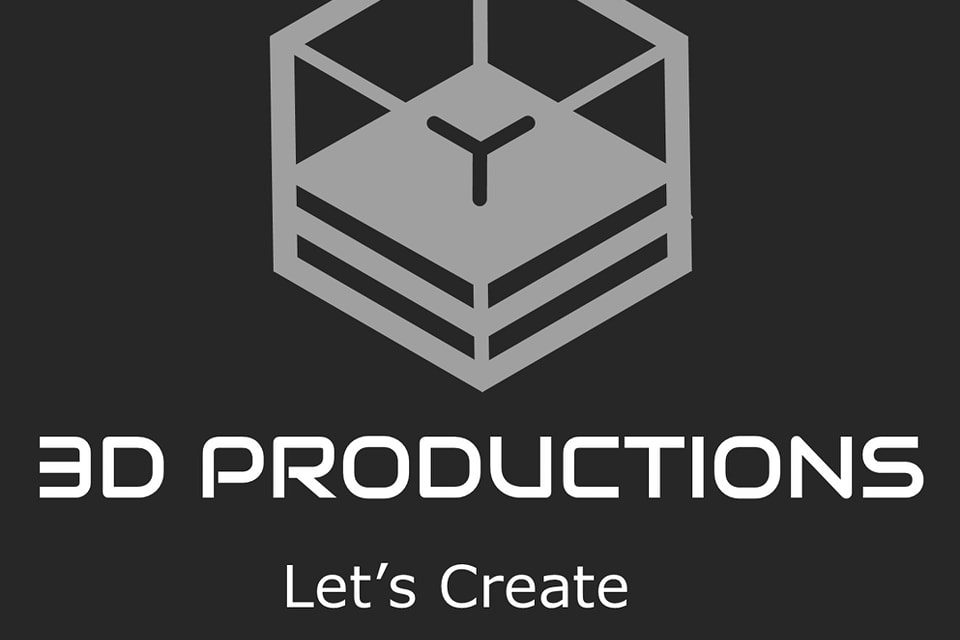We’ve mentioned 3D printing as a business idea before on this platform. There have been several times when I have thought of going into detail on a particular business idea. I have always omitted it because I felt that most Zimbabweans are not familiar with it. I am referring to 3D printing – one of the most cutting-edge technologies available today. I am thrilled that we now have a Zimbabwean startup offering 3D printing services. I recently contacted, Richard John, the founder of the startup called Three Dimensional Productions. In this article, I share with you the interesting discussion we had.
Who Is Three Dimensional Productions?
Three Dimensional Productions (3D Productions) is a business that strives to give Zimbabweans the tools to turn their ideas into reality. We specialize in Additive Manufacturing (3D printing) as well as the manufacture and sale of 3D printers. 3D printing is still very new in Zimbabwe but is a game-changing technology for a country that has a very limited and largely outdated manufacturing industry.
3D printing allows the manufacture of new and innovative products quicker and cheaper than traditional methods. It is a technology that stands to benefit so many Zimbabweans. We aim to make manufacturing accessible to every Zimbabwean so that individuals and businesses can be empowered to innovate and create.
When And How Did Three Dimensional Productions Start?
3D Productions was incorporated by Richard John on 8 September 2021 in Harare, Zimbabwe. The business was started with just one budget second-hand 3D printer that has now grown to more than half a dozen 3D printers. We have handled 3D printing projects ranging from electronic enclosures to robotics parts, educational models, machinery spare parts, and automotive spare parts (to name a few).
A major turning point for 3D Productions was the launch of the Gadzira 3D Printer on Africa Day in 2022. It was introduced to change the status quo of the manufacturing industry and to kick-start the manufacturing of high-tech products in Zimbabwe. Instead of going the all too common route of importing and reselling products from other brands; 3D Productions has designed its own high-tech product that will be built right here in Zimbabwe, and sold locally and globally. This is also the first of many upcoming product offerings from the brand.
Which Products Or Services Do You Offer?
We currently offer 3D printing, 3D modelling and soon a 3D scanning service. Our primary offering though is our first product; the GADZIRA 3D Printer. The GADZIRA 3D Printer is currently in the final stages of development and will be on sale before the end of 2022. Our website is the best place to go to for details on all our products and services. Or simply contact 3D Productions directly on +263777623825 to discuss any ideas or projects in mind.
More services and products are constantly being introduced so keep up to date by following our social media: Facebook, Instagram, and LinkedIn.
Briefly Detail The Processes And Concepts Of 3D Printing, 3D Modelling, And 3D Scanning
Starting with 3D printing; otherwise known as Additive Manufacturing, it is a process in which a physical object is fabricated one layer at a time according to the geometry of a 3D model file. At 3D Productions, we currently use Fused Filament Fabrication (FFF) technology in which the layers of the part are fabricated using extruded thermoplastics. The type of thermoplastic used in the process can be selected according to the intended application of the part. There are many other kinds of 3D printing technologies; each with its own different type of input material and associated benefits.
3D modelling is a technique in computer graphics for producing a digital representation of an object or surface in a simulated three-dimensional space. A 3D model is a digital input for 3D printing. 3D scanning is simply the process of using specialized equipment (a 3D scanner) to capture real-world geometry and save it as a virtual three-dimensional object. It is primarily used for creating 3D models of existing items. These 3D models can be used for 3D printing copies of the existing part or for other purposes such as creating animations or games. So in short, 3D printing is a process for rapidly producing a physical object from a digital 3D model; 3D modelling and 3D scanning are supporting processes for 3D printing.
The Team Behind The Brand?
The brand is currently led by the Founder, Richard John; a Mechanical Engineer with a passion for innovation and a strong interest in manufacturing. The business is continuously growing and there are positions open for hire that can be viewed on our website.
Currently, What Challenges Are You Facing?
The primary challenge being faced has to do with how few people in Zimbabwe are familiar with 3D printing technology at the moment. The market is still in its infancy and it will take time for the market to grow as awareness also grows.
Another major challenge is one that is faced by local manufacturing companies; that is the highly unstable electricity supply in Zimbabwe. The inconsistent electricity does hurt productivity but it is a short-term challenge that is being overcome by investing in backup power and solar energy.
How Can People Help The Brand Grow?
We understand that 3D printing is still very unfamiliar to many Zimbabweans so we urge people to take a look at our website and social media to learn more about what the technology is and its capability. And of course, feel free to contact 3D Productions if you have any questions about 3D printing or our offerings. The more people that know about the technology and its potential, the better it will be for our brand.
Any Partnership Or Investment Prospects?
3D Productions is definitely open to mutually beneficial partnerships. In fact, 3D Productions has been chosen as one of the top 90 game-changers in Zimbabwe in the Game Changers Zimbabwe investment competition and is en route to potentially securing investment.
Elaborate On The Power And Benefits Of 3D Printing
If a company decided they wanted to design and manufacture a robot they could have the
mechanical parts manufactured either using traditional manufacturing methods (injection moulding + subtractive manufacturing) or 3D printing. If they went the traditional manufacturing route they would have to pay massive fees upfront to have moulds produced for every single component they want to manufacture.
To produce just the moulds for a few parts (and not the actual parts) of their robot could easily cost tens or hundreds of thousands of dollars (USD). That does not account for any moulds that need to be remade in the event the design of their robot changes. So it is very uneconomical for any individual or company without massive capital to have new and innovative products manufactured.
On top of that, the lead time to get even a single part manufactured is generally at least several weeks. On the other hand, if the company went with 3D printing then they simply design the parts on a computer and have them printed locally or even in-house all without any massive upfront costs for producing moulds. So new parts can go from costing tens or hundreds of thousands of dollars to tens or hundreds of dollars and take only hours or a few days to manufacture. The educational sector also stands to benefit greatly from 3D printing, as students will be able to prototype their ideas and drastically enhance their learning.
It is time to make Zimbabwe and Africa global industrial competitors. We have the talent and natural resources, so Let Us Create!








